Full text
PDF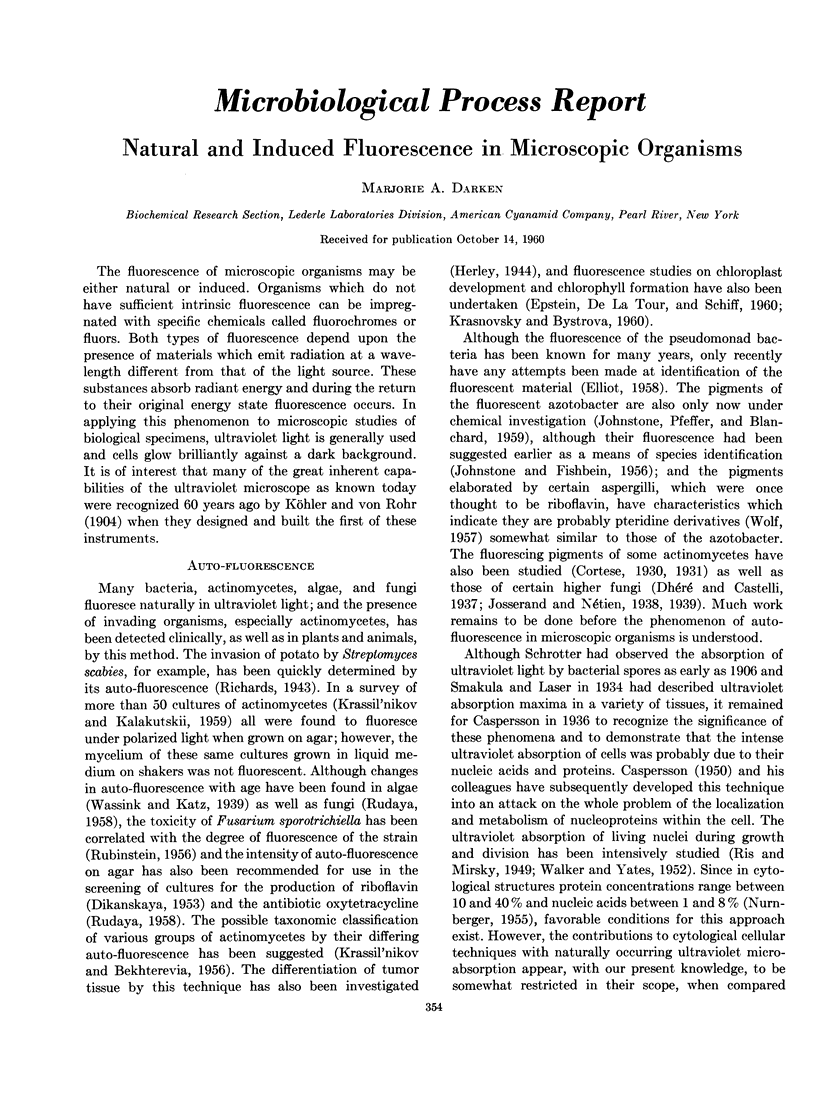
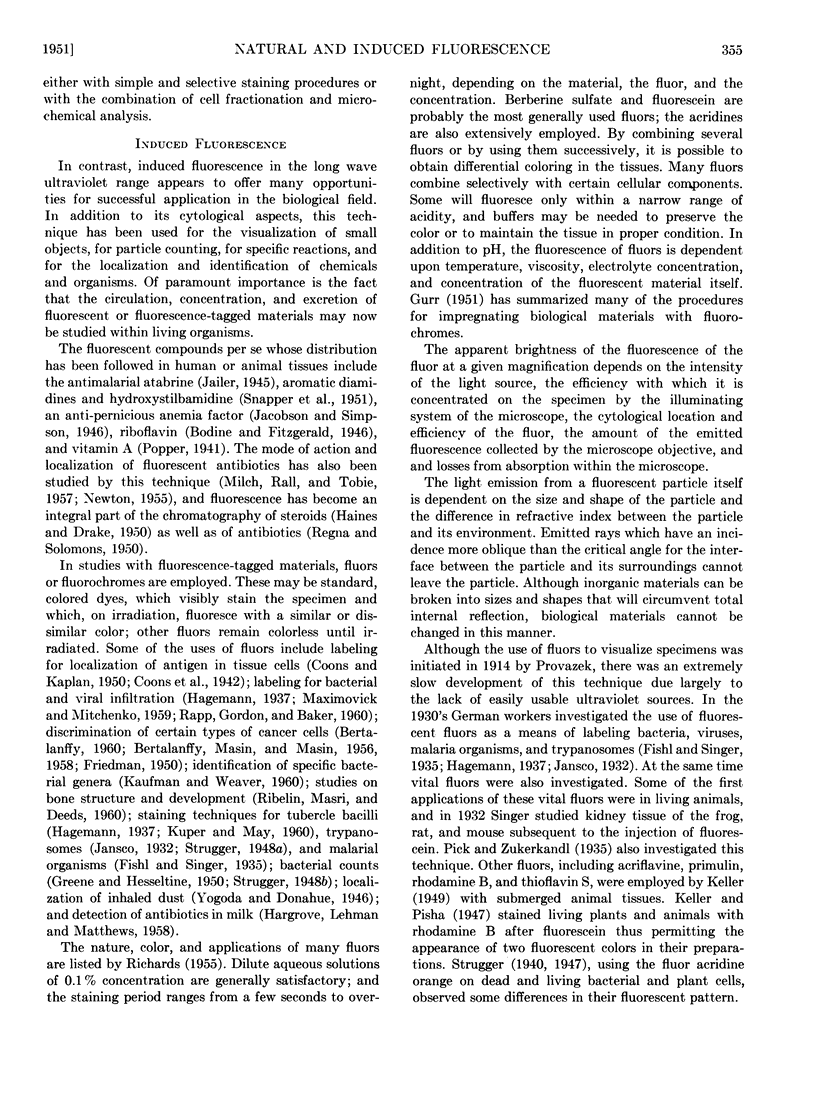
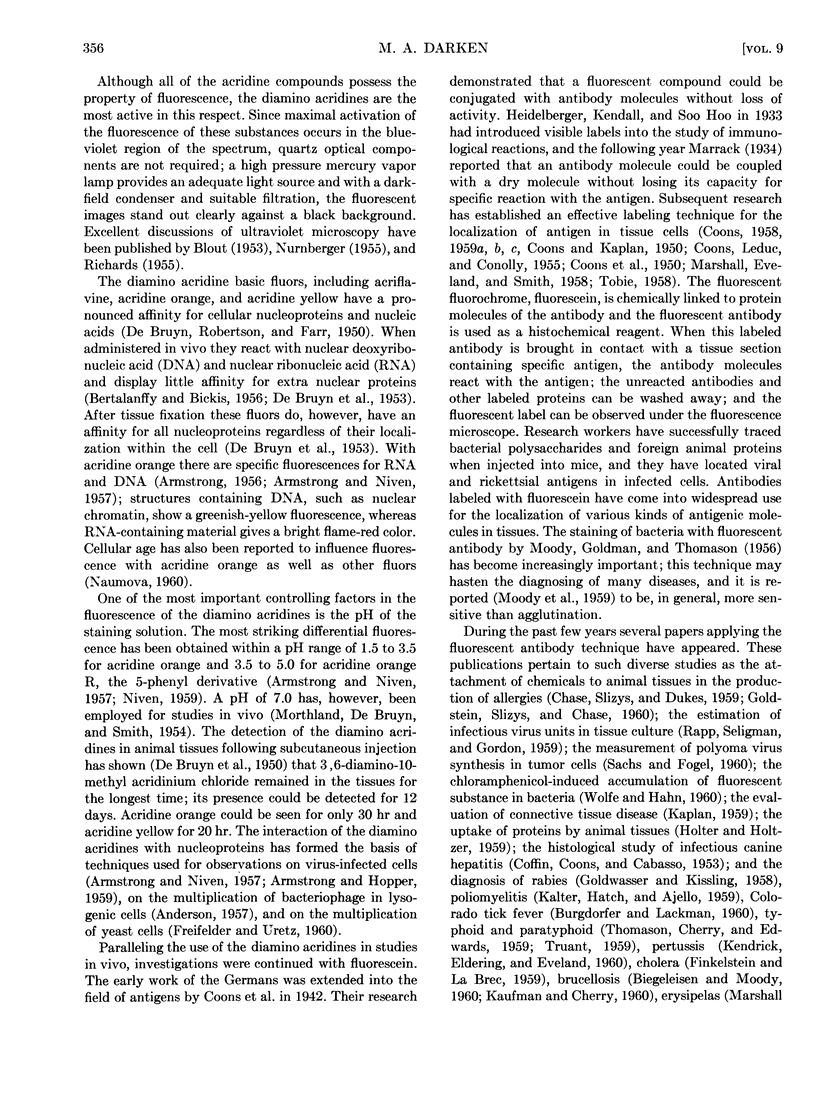
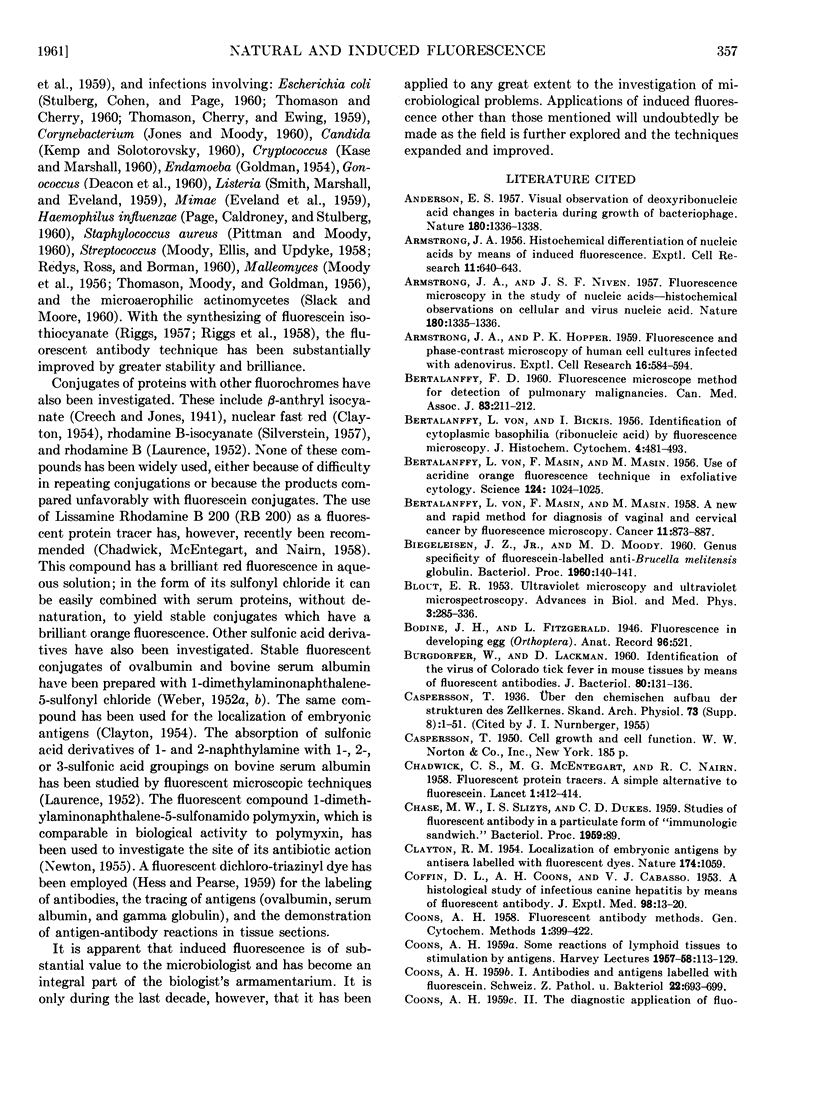
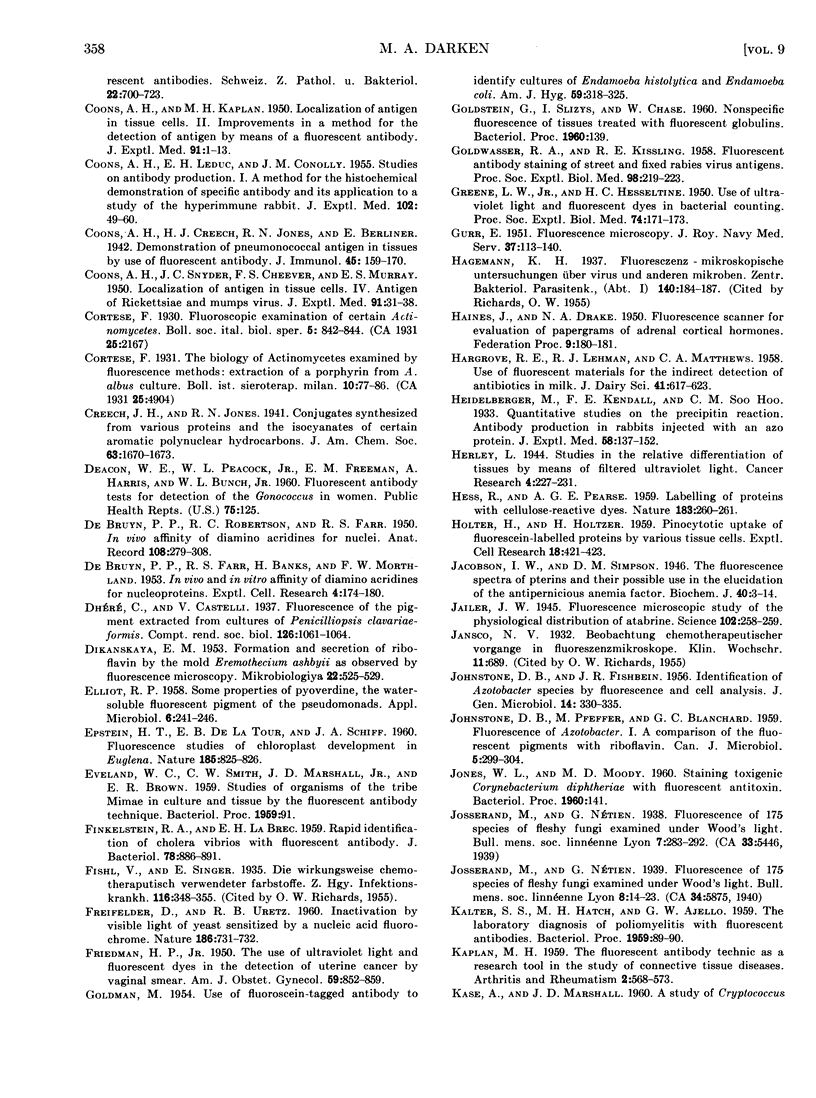
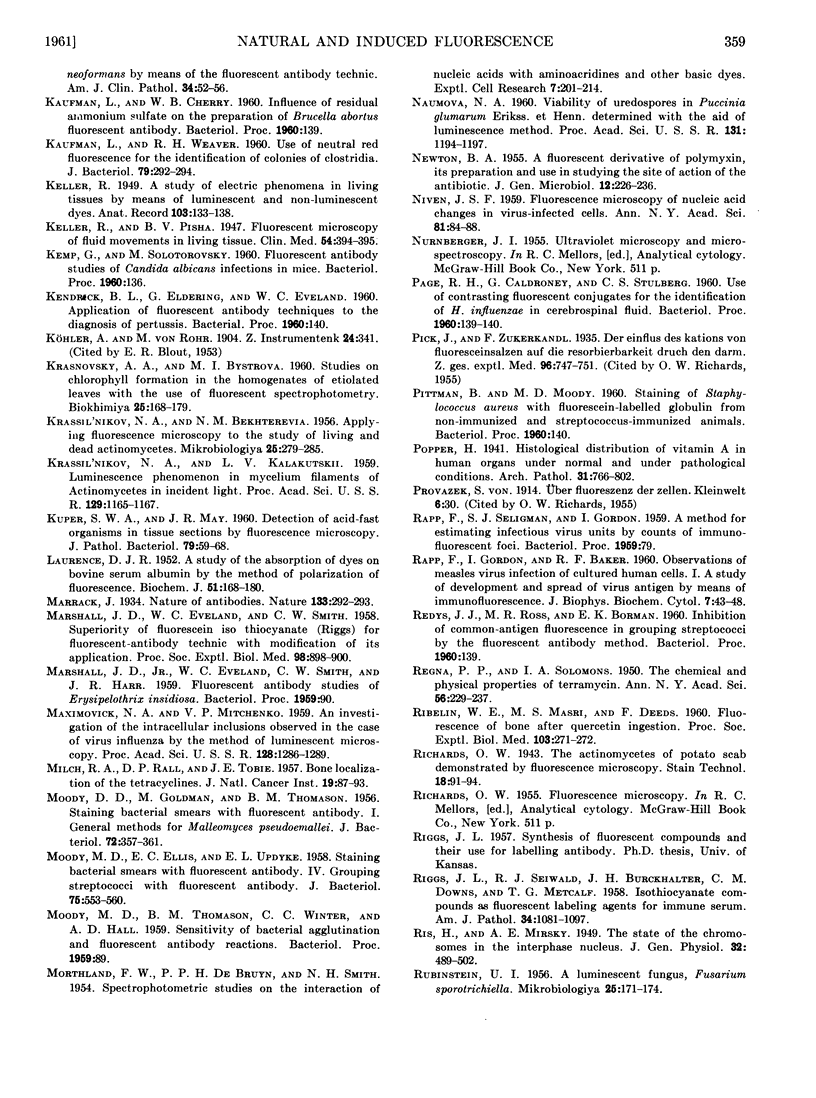
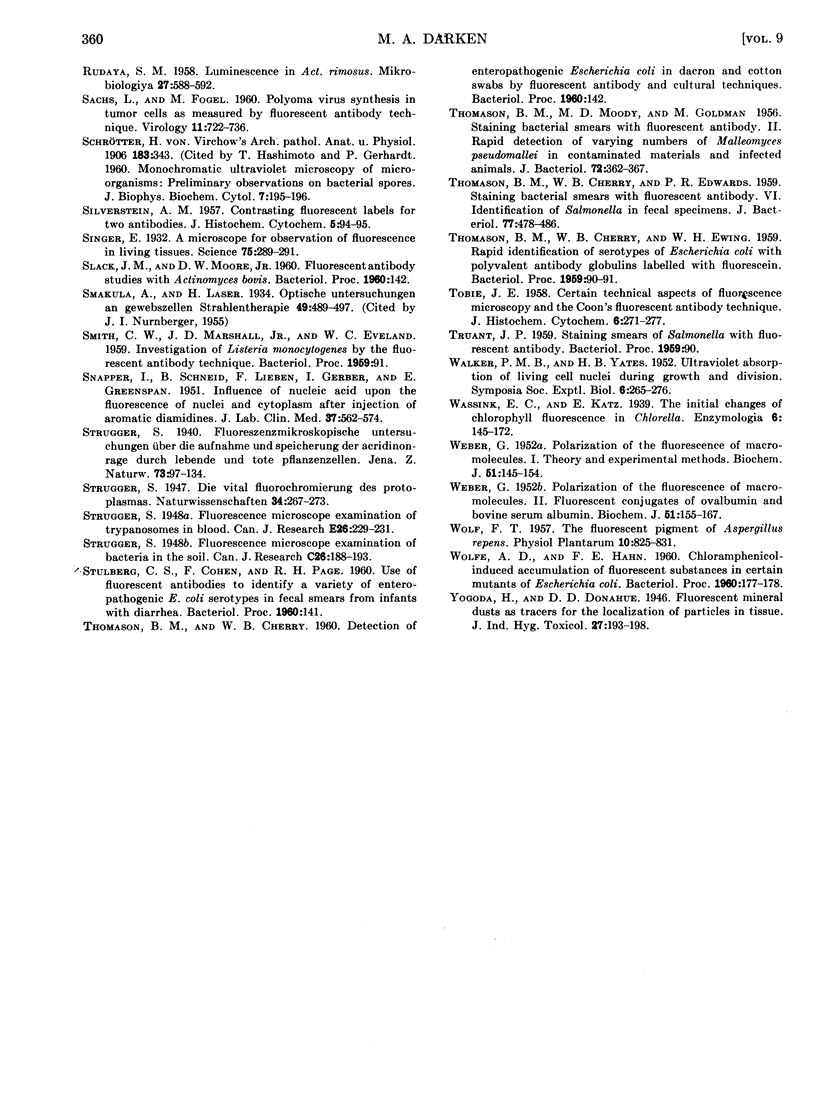
Selected References
These references are in PubMed. This may not be the complete list of references from this article.
- ANDERSON E. S. Visual observation of deoxyribonucleic acid changes in bacteria during growth of bacteriophage. Nature. 1957 Dec 14;180(4598):1336–1338. doi: 10.1038/1801336a0. [DOI] [PubMed] [Google Scholar]
- ARMSTRONG J. A., HOPPER P. K. Fluorescence and phase-contrast microscopy of human cell cultures infected with adenovirus. Exp Cell Res. 1959 Mar;16(3):584–594. doi: 10.1016/0014-4827(59)90126-0. [DOI] [PubMed] [Google Scholar]
- ARMSTRONG J. A. Histochemical differentiation of nucleic acids by means of induced fluorescence. Exp Cell Res. 1956 Dec;11(3):640–643. doi: 10.1016/0014-4827(56)90173-2. [DOI] [PubMed] [Google Scholar]
- ARMSTRONG J. A., NIVEN J. S. Fluorescence microscopy in the study of nucleic acids; histochemical observations on cellular and virus nucleic acids. Nature. 1957 Dec 14;180(4598):1335–1336. doi: 10.1038/1801335a0. [DOI] [PubMed] [Google Scholar]
- BERTALANFFY F. D. Fluorescence microscope method for detection of pulmonary malignancies. Can Med Assoc J. 1960 Jul 30;83:211–212. [PMC free article] [PubMed] [Google Scholar]
- BICKIS I., VON BERTALANFFY L. Identification of cytoplasmic basophilia (ribonucleic acid) by fluorescence microscopy. J Histochem Cytochem. 1956 Sep;4(5):481–493. doi: 10.1177/4.5.481. [DOI] [PubMed] [Google Scholar]
- BLOUT E. R. Ultraviolet microscopy and ultraviolet microspectroscopy. Adv Biol Med Phys. 1953;3:285–336. doi: 10.1016/b978-1-4831-9926-9.50011-2. [DOI] [PubMed] [Google Scholar]
- BURGDORFER W., LACKMAN D. Identification of the virus of Colorado tick fever in mouse tissues by means of fluorescent antibodies. J Bacteriol. 1960 Jul;80:131–136. doi: 10.1128/jb.80.1.131-136.1960. [DOI] [PMC free article] [PubMed] [Google Scholar]
- CHADWICK C. S., McENTEGART M. G., NAIRN R. C. Fluorescent protein tracers; a simple alternative to fluorescein. Lancet. 1958 Feb 22;1(7017):412–414. doi: 10.1016/s0140-6736(58)90721-9. [DOI] [PubMed] [Google Scholar]
- CLAYTON R. M. Localization of embryonic antigens by antisera labelled with fluorescent dyes. Nature. 1954 Dec 4;174(4440):1059–1059. doi: 10.1038/1741059a0. [DOI] [PubMed] [Google Scholar]
- COFFIN D. L., COONS A. H., CABASSO V. J. A histological study of infectious canine hepatitis by means of fluorescent antibody. J Exp Med. 1953 Jul;98(1):13–20. doi: 10.1084/jem.98.1.13. [DOI] [PMC free article] [PubMed] [Google Scholar]
- COONS A. H. Antibodies and antigens labelled with fluorescein. Schweiz Z Pathol Bakteriol. 1959;22:693–699. doi: 10.1159/000160654. [DOI] [PubMed] [Google Scholar]
- COONS A. H. Fluorescent antibody methods. Gen Cytochem Methods. 1958;1:399–422. [PubMed] [Google Scholar]
- COONS A. H., KAPLAN M. H. Localization of antigen in tissue cells; improvements in a method for the detection of antigen by means of fluorescent antibody. J Exp Med. 1950 Jan 1;91(1):1–13. doi: 10.1084/jem.91.1.1. [DOI] [PMC free article] [PubMed] [Google Scholar]
- COONS A. H., LEDUC E. H., CONNOLLY J. M. Studies on antibody production. I. A method for the histochemical demonstration of specific antibody and its application to a study of the hyperimmune rabbit. J Exp Med. 1955 Jul 1;102(1):49–60. doi: 10.1084/jem.102.1.49. [DOI] [PMC free article] [PubMed] [Google Scholar]
- COONS A. H., SNYDER J. C. Localization of antigen in tissue cells; antigens of rickettsiae and mumps virus. J Exp Med. 1950 Jan 1;91(1):31-8, pl. doi: 10.1084/jem.91.1.31. [DOI] [PMC free article] [PubMed] [Google Scholar]
- COONS A. H. Some reactions of lymphoid tissues to stimulation by antigens. Harvey Lect. 1957;53:113–129. [PubMed] [Google Scholar]
- DEACON W. E., PEACOCK W. L., Jr, FREEMAN E. M., HARRIS A., BUNCH W. L., Jr Fluorescent antibody tests for detection of the gonococcus in women. Public Health Rep. 1960 Feb;75:125–129. [PMC free article] [PubMed] [Google Scholar]
- DIKANSKAIA E. M. Liuminestsentnomikroskopicheskie nabliudeniia na obrazovaniem i vydeleniem riboflavina mikroskopiche. skim gribon Eremethecium ashbyii. Mikrobiologiia. 1953 Sep-Oct;22(5):525–529. [PubMed] [Google Scholar]
- ELLIOTT R. P. Some properties of pyoverdine, the water-soluble fluorescent pigment of the pseudomonads. Appl Microbiol. 1958 Jul;6(4):241–246. doi: 10.1128/am.6.4.241-246.1958. [DOI] [PMC free article] [PubMed] [Google Scholar]
- EPSTEIN H. T., BOY DE LA TOUR E., SCHIFF J. A. Fluorescence studies of chloroplast development in Euglena. Nature. 1960 Mar 19;185:825–826. doi: 10.1038/185825a0. [DOI] [PubMed] [Google Scholar]
- FINKELSTEIN R. A., LABREC E. H. Rapid identification of cholera vibrios with fluorescent antibody. J Bacteriol. 1959 Dec;78:886–891. doi: 10.1128/jb.78.6.886-891.1959. [DOI] [PMC free article] [PubMed] [Google Scholar]
- FREIFELDER D., URETZ R. B. Inactivation by visible light of yeast sensitized by a nucleic acid fluorochrome. Nature. 1960 May 28;186:731–732. doi: 10.1038/186731b0. [DOI] [PubMed] [Google Scholar]
- GOLDMAN M., MOODY M. D., THOMASON B. M. Staining bacterial smears with fluorescent antibody. I. General methods for Malleomyces pseudomallei. J Bacteriol. 1956 Sep;72(3):357–361. doi: 10.1128/jb.72.3.357-361.1956. [DOI] [PMC free article] [PubMed] [Google Scholar]
- GOLDMAN M., MOODY M. D., THOMASON B. M. Staining bacterial smears with fluorescent antibody. II. Rapid detection of varying numbers of Malleomyces pseudomallei in contaminated materials and infected animals. J Bacteriol. 1956 Sep;72(3):362–367. doi: 10.1128/jb.72.3.362-367.1956. [DOI] [PMC free article] [PubMed] [Google Scholar]
- GOLDMAN M. Use of fluorescein-tagged antibody to identify cultures of Endamoeba histolytica and Endamoeba coli. Am J Hyg. 1954 May;59(3):318–325. doi: 10.1093/oxfordjournals.aje.a119645. [DOI] [PubMed] [Google Scholar]
- GOLDWASSER R. A., KISSLING R. E. Fluorescent antibody staining of street and fixed rabies virus antigens. Proc Soc Exp Biol Med. 1958 Jun;98(2):219–223. doi: 10.3181/00379727-98-23996. [DOI] [PubMed] [Google Scholar]
- GREENE L. W., Jr, HESSELTINE H. C. Use of ultraviolet light and fluorescent dyes in bacterial counting. Proc Soc Exp Biol Med. 1950 May;74(1):171–173. doi: 10.3181/00379727-74-17843. [DOI] [PubMed] [Google Scholar]
- GURR E. Fluorescence microscopy. J R Nav Med Serv. 1951;37(3):133–140. [PubMed] [Google Scholar]
- HESS R., PEARSE A. G. Labelling of proteins with cellulose-reactive dyes. Nature. 1959 Jan 24;183(4656):260–261. doi: 10.1038/183260a0. [DOI] [PubMed] [Google Scholar]
- HOLTER H., HOLTZER H. Pinocytotic uptake of fluorescein-labelled proteins by various tissue cells. Exp Cell Res. 1959 Oct;18:421–423. doi: 10.1016/0014-4827(59)90033-3. [DOI] [PubMed] [Google Scholar]
- JOHNSTONE D. B., FISHBEIN J. R. Identification of Azotobacter species by fluorescence and cell analysis. J Gen Microbiol. 1956 Apr;14(2):330–335. doi: 10.1099/00221287-14-2-330. [DOI] [PubMed] [Google Scholar]
- JOHNSTONE D. B., PFEFFER M., BLANCHARD G. C. Fluorescence of Azotobacter. I. A comparison of the fluorescent pigments with riboflavin. Can J Microbiol. 1959 Jun;5(3):299–304. doi: 10.1139/m59-035. [DOI] [PubMed] [Google Scholar]
- Jacobson W. The fluorescence spectra of pterins and their possible use in the elucidation of the antipernicious anaemia factor. Part 2. Biochem J. 1946;40(1):9–14. doi: 10.1042/bj0400009. [DOI] [PMC free article] [PubMed] [Google Scholar]
- Jailer J. W. FLUORESCENT MICROSCOPIC STUDY OF THE PHYSIOLOGICAL DISTRIBUTION OF ATABRINE. Science. 1945 Sep 7;102(2645):258–259. doi: 10.1126/science.102.2645.258. [DOI] [PubMed] [Google Scholar]
- KAPLAN M. H. The fluorescent antibody technic as a research tool in the study of connective tissue disease. Arthritis Rheum. 1959 Dec;2:568–573. doi: 10.1002/1529-0131(195912)2:6<568::aid-art1780020612>3.0.co;2-x. [DOI] [PubMed] [Google Scholar]
- KASE A., MARSHALL J. D., Jr A study of Cryptococcus neoformans by means of the fluorescent antibody technic. Am J Clin Pathol. 1960 Jul;34:52–56. doi: 10.1093/ajcp/34.1.52. [DOI] [PubMed] [Google Scholar]
- KAUFMAN L., WEAVER R. H. Use of neutral red fluorescence for the identification of colonies of clostridia. J Bacteriol. 1960 Feb;79:292–294. doi: 10.1128/jb.79.2.292-294.1960. [DOI] [PMC free article] [PubMed] [Google Scholar]
- KRASNOVSKII A. A., BYSTROVA M. I. [Studies on chlorophyll synthesis in homogenates of etiolated leaves by means of a fluorescence spectrophotometric method]. Biokhimiia. 1960 Jan-Feb;25:168–179. [PubMed] [Google Scholar]
- KUPER S. W., MAY J. R. Detection of acid-fast organisms in tissue sections by fluorescence microscopy. J Pathol Bacteriol. 1960 Jan;79:59–68. doi: 10.1002/path.1700790108. [DOI] [PubMed] [Google Scholar]
- LAURENCE D. J. R. A study of the adsorption of dyes on bovine serum albumin by the method of polarization of fluorescence. Biochem J. 1952 May;51(2):168–180. doi: 10.1042/bj0510168. [DOI] [PMC free article] [PubMed] [Google Scholar]
- MARSHALL J. D., EVELAND W. C., SMITH C. W. Superiority of fluorescein isothiocyanate (Riggs) for fluorescent-antibody technic with a modification of its application. Proc Soc Exp Biol Med. 1958 Aug-Sep;98(4):898–900. doi: 10.3181/00379727-98-24222. [DOI] [PubMed] [Google Scholar]
- MASIN F., MASIN M., VON BERTALANFFY L. Use of acridine-orange fluorescence technique in exfoliative cytology. Science. 1956 Nov 23;124(3230):1024–1025. doi: 10.1126/science.124.3230.1024. [DOI] [PubMed] [Google Scholar]
- MILCH R. A., RALL D. P., TOBIE J. E. Bone localization of the tetracyclines. J Natl Cancer Inst. 1957 Jul;19(1):87–93. [PubMed] [Google Scholar]
- MOODY M. D., ELLIS E. C., UPDYKE E. L. Staining bacterial smears with fluorescent antibody. IV. Grouping streptococci with fluorescent antibody. J Bacteriol. 1958 May;75(5):553–560. doi: 10.1128/jb.75.5.553-560.1958. [DOI] [PMC free article] [PubMed] [Google Scholar]
- MORTHLAND F. W., DE BRUYN P. P., SMITH N. H. Spectrophotometric studies on the interaction of nucleic acids with aminoacridines and other basic dyes. Exp Cell Res. 1954 Aug;7(1):201–214. doi: 10.1016/0014-4827(54)90055-5. [DOI] [PubMed] [Google Scholar]
- NEWTON B. A. A fluorescent derivative of polymyxin: its preparation and use in studying the site of action of the antibiotic. J Gen Microbiol. 1955 Apr;12(2):226–236. doi: 10.1099/00221287-12-2-226. [DOI] [PubMed] [Google Scholar]
- NIVEN J. S. Fluorescence microscopy of nucleic acid changes in virus-infected cells. Ann N Y Acad Sci. 1959 Jul 21;81:84–88. doi: 10.1111/j.1749-6632.1959.tb49297.x. [DOI] [PubMed] [Google Scholar]
- RAPP F., GORDON I., BAKER R. F. Observations of measles virus infection of cultured human cells. I. A study of development and spread of virus antigen by means of immunofluorescence. J Biophys Biochem Cytol. 1960 Feb;7:43–48. doi: 10.1083/jcb.7.1.43. [DOI] [PMC free article] [PubMed] [Google Scholar]
- REGNA P. P., SOLOMONS I. A. The chemical and physical properties of terramycin. Ann N Y Acad Sci. 1950 Sep;53(2):229–237. doi: 10.1111/j.1749-6632.1950.tb42154.x. [DOI] [PubMed] [Google Scholar]
- RIGGS J. L., SEIWALD R. J., BURCKHALTER J. H., DOWNS C. M., METCALF T. G. Isothiocyanate compounds as fluorescent labeling agents for immune serum. Am J Pathol. 1958 Nov-Dec;34(6):1081–1097. [PMC free article] [PubMed] [Google Scholar]
- RUBINSHTEIN Iu I. Liuminestsentsiia gribov Fusarium sporotrichiella. Mikrobiologiia. 1956 Mar-Apr;25(2):171–174. [PubMed] [Google Scholar]
- RUDAIA S. M. Liuminestsentsiia Act. rimosus. Mikrobiologiia. 1958 Sep-Oct;27(5):588–592. [PubMed] [Google Scholar]
- SACHS L., FOGEL M. Polyoma virus synthesis in tumor cells as measured by the fluorescent antibody technique. Virology. 1960 Aug;11:722–736. doi: 10.1016/0042-6822(60)90116-1. [DOI] [PubMed] [Google Scholar]
- SNAPPER I., SCHNEID B., LIEBEN F., GERBER I., GREENSPAN E. Influence of nucleic acid upon the fluorescence of nuclei and cytoplasm after injection of aromatic diamidines. J Lab Clin Med. 1951 Apr;37(4):562–574. [PubMed] [Google Scholar]
- Singer E. A MICROSCOPE FOR OBSERVATION OF FLUORESCENCE IN LIVING TISSUES. Science. 1932 Mar 11;75(1941):289–291. doi: 10.1126/science.75.1941.289-a. [DOI] [PubMed] [Google Scholar]
- THOMASON B. M., CHERRY W. B., EDWARDS P. R. Staining bacterial smears with fluorescent antibody. VI. Identification of Salmonellae in fecal specimens. J Bacteriol. 1959 Apr;77(4):478–486. doi: 10.1128/jb.77.4.478-486.1959. [DOI] [PMC free article] [PubMed] [Google Scholar]
- TOBIE J. E. Certain technical aspects of fluorescence microscopy and the Coons fluorescent antibody technique. J Histochem Cytochem. 1958 Jul;6(4):271–277. doi: 10.1177/6.4.271. [DOI] [PubMed] [Google Scholar]
- VON BERTALANFFY L., MASIN M., MASIN F. A new and rapid method for diagnosis of vaginal and cervical cancer by fluorescence microscopy. Cancer. 1958 Sep-Oct;11(5):873–887. doi: 10.1002/1097-0142(195809/10)11:5<873::aid-cncr2820110503>3.0.co;2-b. [DOI] [PubMed] [Google Scholar]
- WEBER G. Polarization of the fluorescence of macromolecules. I. Theory and experimental method. Biochem J. 1952 May;51(2):145–155. doi: 10.1042/bj0510145. [DOI] [PMC free article] [PubMed] [Google Scholar]
- WEBER G. Polarization of the fluorescence of macromolecules. II. Fluorescent conjugates of ovalbumin and bovine serum albumin. Biochem J. 1952 May;51(2):155–167. doi: 10.1042/bj0510155. [DOI] [PMC free article] [PubMed] [Google Scholar]
- de BRUYN P. P. H., ROBERTSON R. C., FARR R. S. In vivo affinity of diaminoacridines for nuclei. Anat Rec. 1950 Oct;108(2):279–307. doi: 10.1002/ar.1091080208. [DOI] [PubMed] [Google Scholar]


